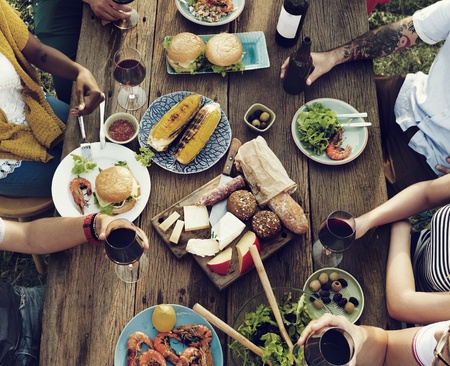
Happy Healthy Hump Day: It’s Picnic Season – Let’s Talk Food Safety
Posted: May 31, 2017
With Memorial Day behind us, we officially embark on picnic season. The season where food is taken outside and well, let’s be honest, not always prepared and chilled as it should be. My mother would tell you this became my biggest pet peeve after finishing my first year of graduate school. I took a food safety class and it really made me start to think about what can happen when we do not handle our picnic foods properly.
Even though foodborne illnesses are preventable, they contribute significantly to the cost of health care. They also present a major challenge to certain groups of people. Although anyone can get a foodborne illness, some people are at greater risk. For example:
- – Children younger than age 4 have the highest incidence of laboratory-confirmed infections from some foodborne pathogens, including Campylobacter, Cryptosporidium, Salmonella, Shiga toxin-producing Escherichia coli O157, Shigella, and Yersinia.
- – People older than age 50 and those with reduced immunity are at greater risk for hospitalizations and death from intestinal pathogens commonly transmitted through foods.
Food hazards, including germs and chemical contaminants, can enter the food supply at any point from farm to table. Most of these hazards cannot be detected in food when it is purchased or consumed. In addition, a food itself can cause severe adverse reactions in people who are allergic to it. In the United States, food allergies are a significant concern, both among children under age 18 and some adults.
It is important for people to understand how their behavior and activities contribute to the safety of food and how they can decrease the risk of foodborne illness. From processes on the farm to practices in the kitchen, human activities play an important role in food safety. We face many challenges in keeping our food safe.
The food industry is challenged by:
- – Large employee populations with high rates of turnover, communication challenges, and cultural differences in how food is prepared
- – Non-uniform systems for training and certifying workers
- – Lack of sick leave policies for sick workers
- – Difficulties in tracing food items to their sources
- – Changes in production practices
- – Increasing imports
Consumers are challenged by:
- – Determining when certain foods are cooked to appropriate temperatures
- – Separating more risky foods from less risky foods
- – Storing food at safe temperatures
- – Properly cleaning hands and surfaces
As noted by Better Homes and Garden magazine, follow the same basic steps to keeping food safe in the kitchen for keeping outdoor picnic food safe. We show you how cleaning, separating, cooking, and chilling food helps to keep picnic food safe and spoil-free.
Keep the Food Clean: When preparing food for your picnic, clean your hands and prep surfaces often. Moist towelettes or soap and water will do the trick.
Separate Raw and Cooked Food: To avoid cross-contamination among different picnic foods, bring plenty of plates and utensils along. Designate some plates for handling raw foods and the others for handling cooked foods. Keep uncooked meats, poultry, fish, and shellfish separate from other foods and transport in tightly sealed bags or containers; pack them at the bottom of the cooler so that juices from these foods do not drip onto other foods.
Cook Picnic Food Properly: Use a food thermometer to make sure your foods are cooked to a safe internal temperature, and don’t partially cook or grill food with the intent of finishing the cooking later.
Chill Picnic Food: When packing food into your picnic basket or cooler, remember these tips for keeping it at the right temperature:
- – Keep perishable foods at a temperature of 40 degrees F or below by packing them in a well-insulated cooler with plenty of ice or ice packs. A full cooler will maintain its cold temperature longer than a partially filled one. Thaw meat, poultry, fish, and shellfish in the refrigerator before taking it to a picnic. Wait until just before leaving home to pack perishable foods in the cooler.
- – Take two insulated coolers (one for drinks and the other for perishable foods) so warm air won’t reach the perishables each time someone grabs a chilled beverage.
- – On your way to the picnic, place coolers in the coolest part of your air-conditioned car rather than the trunk. At the picnic location, keep coolers tightly closed in a shady area and add ice often.
- – Keep picnic food in the coolers until you need them; remove raw food only when you’re ready to put it on the grill. (If you’re grilling in batches, keep the food that’s not being grilled in the cooler.)
- – Discard any perishable food left outside for more than two hours (one hour if the temperature is above 80 degrees F).
Let’s make sure that our friends and family do not become the 1 in 6 who get sick from eating contaminated food.
Additional Resources
https://www.foodsafety.gov/keep/
https://www.cdc.gov/foodsafety/
https://www.fsis.usda.gov/wps/portal/fsis/topics/food-safety-education

